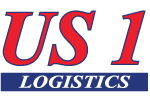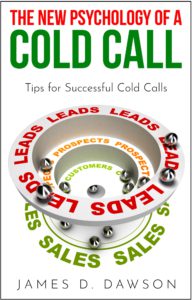Likes don’t pay the bills—conversations do. Avoid these mistakes.
Social media can feel like a highway—fast-paced, noisy, and full of distractions. One minute you’re cruising along, the next you’re swerving to dodge cat videos, political debates, and endless ads for things you never knew you needed. For a freight broker agent, Drayage Agent, Intermodal Agent, or trucking agent, it’s easy to mistake simply “being out there” for making progress.
But here’s the thing—speed without direction just burns fuel. You can post every day, rack up likes, and even gain followers, but if none of that translates into actual conversations with shippers, carriers, or clients, it’s like running a fully loaded rig in circles. You’re moving, but you’re not getting closer to your destination.
In freight, we know the cost of an empty backhaul. The same applies online—posting without a clear plan is wasted capacity. Without the right approach, your digital presence can sputter, stall, and eventually get lost somewhere between “seen” and “remembered.”
That’s why in this post, we’re going to steer through the most common—and most costly—social media mistakes freight agents make. We’ll look at why these blunders can quietly drain your time, money, and credibility, and more importantly, I’ll give you actionable, road-tested tips to keep your online strategy in the fast lane. By the end, you won’t just be chasing impressions—you’ll be turning your posts into profits, leads, and long-term relationships.
1. Mistaking Activity for Strategy 🚦
It’s easy to confuse being busy with being effective. You know the drill—you’re posting daily, maybe even multiple times a day, and it feels like you’re on top of your social media game. But without a plan, it’s like sending a fully loaded truck out without a delivery address. Sure, the wheels are turning, but no one’s getting their freight, and you’re burning diesel for nothing.
For many freight broker agents, the default is to post generic industry updates—fuel prices, weather conditions, or “Happy Friday” graphics—hoping that sheer volume will equal visibility. But here’s the truth: the algorithm doesn’t reward noise, it rewards value. Shippers, carriers, and potential clients aren’t scrolling to be bombarded with random facts—they want insights that solve their problems, make their jobs easier, or help them move freight more efficiently.
Think of your social media presence like dispatching loads: every post needs a clear origin (your business goal) and a defined destination (your target audience). Without that, you’re just scattering trailers across the map and hoping one lands where it’s needed.
Practical Tip: Build a monthly content calendar with specific objectives tied to each post. One post might be designed to generate leads by highlighting a recent success story. Another might focus on nurturing existing relationships by sharing industry tips or spotlighting a valued carrier partner. The key is to make every piece of content earn its keep, just like every mile on the road needs to be profitable.
📊 Stat: Businesses with a documented social media strategy are 538% more likely to achieve their marketing goals (CoSchedule). That’s not a typo—over five times more effective.
Quote: “Doing business without advertising is like winking at a girl in the dark. You know what you’re doing, but nobody else does.” — Steuart Henderson Britt
2. Ignoring Analytics 📉
If you’re not looking at your data, you’re driving blind. Sure, you might be moving forward, but you have no idea if you’re headed toward your destination or down a dead-end road. In the freight world, you wouldn’t send a driver out without GPS or a load sheet—so why would you run your social media without analytics?
Analytics are your dashboard. They tell you which posts spark real conversations, which formats (videos, infographics, carousels) your audience prefers, and even when your followers are most active online. These insights aren’t just “nice to have”—they’re the difference between posting into a void and creating content that gets noticed, shared, and acted on.
For freight agent brokers and trucking agents, ignoring these numbers means missing patterns that directly tie to revenue. For example, you might discover that posts featuring behind-the-scenes delivery photos generate the most RFQ (Request for Quote) inquiries, or that LinkedIn articles about market rate trends attract the right carrier partnerships. Without that knowledge, you’re guessing—and guessing is expensive.
Practical Tip: Block 15 minutes every week to review your engagement rates, click-through rates, and follower demographics. Then, make adjustments. If Tuesday morning posts get more clicks than Friday afternoon ones, shift your schedule. If videos outperform text updates, make more videos. Treat it like route optimization for your content.
📊 Stat: Marketers who track metrics are 60% more likely to improve their campaigns (HubSpot). Translation: the numbers tell a story—read it, and you’ll drive better results.
Quote: “In God we trust. All others must bring data.” — W. Edwards Deming
3. Over-Pitching Too Early 📢
Nobody likes the pushy salesperson who tries to close before saying hello. You’ve probably experienced it—connecting with someone on LinkedIn and, before you’ve even exchanged pleasantries, your inbox pings with a three-paragraph sales pitch. It’s like a stranger walking into your office, plopping down a rate sheet, and expecting you to sign. That kind of approach can turn potential leads away faster than a rate spike in peak season.
For freight agents, the temptation to push for a quote immediately is understandable—after all, time is money. But in the relationship-driven freight industry, trust is your currency. You wouldn’t hand over a load to a carrier you’ve never vetted, and prospects won’t hand over business to someone they barely know.
Instead, warm up the relationship. Share a post breaking down new DOT regulations and what they mean for shippers. Highlight an industry trend—like intermodal volume shifts or port congestion—and offer your perspective. Post a short case study showing how you helped a client save time or money. These are the kinds of value-driven interactions that establish credibility before you ever ask for business.
Think of it like lane building: every valuable interaction is another mile closer to securing the load. Only once you’ve paved that route should you send the “Call me for a quote” message—and by then, they’ll be far more likely to say yes.
Practical Tip: Follow the 80/20 rule—80% of your posts should deliver value (tips, case studies, industry insights, success stories), and just 20% should directly promote your services. This balance keeps your audience engaged while still leaving room for well-timed offers.
📊 Stat: Content marketing generates three times as many leads as outbound marketing but costs 62% less (Demand Metric). That’s proof that helping first pays off later.
Quote: “Stop selling. Start helping.” — Zig Ziglar
4. Overlooking Visual Storytelling 📸
Walls of text don’t stop thumbs. In today’s endless-scroll culture, people decide in seconds whether to engage or keep moving. For a truck freight broker or Intermodal Agent, that means you have just a blink to catch a potential client’s attention before they’re on to the next post. Visual content—route maps, behind-the-scenes delivery shots, quick video updates from the yard—can be the hook that stops the scroll and gets your message seen.
Visuals also have a humanizing effect. A shot of your team securing a load, a short clip explaining how intermodal shipping can save time, or an infographic breaking down transit times makes your expertise tangible. Instead of being “just another freight agent,” you become a relatable, trusted industry voice. These small moments tell your audience, “We know our stuff, and we’re proud to show it.”
Even your analytics can be turned into visual content. A chart showing month-over-month shipping volume, or a before-and-after cost comparison from a client success story, can transform dry data into something compelling and shareable. That’s where design tools like Canva come in—making it easy to create branded, professional graphics in minutes without needing a full design team.
Practical Tip: Make it a rule that every third post you publish includes a visual—whether it’s a photo, chart, video, or branded graphic. Keep your branding consistent so your content is instantly recognizable in the feed.
📊 Stat: Social media posts with images produce 650% higher engagement than text-only posts (Adobe). That’s not just a bump—it’s a complete game-changer.
Quote: “The best marketing doesn’t feel like marketing.” — Tom Fishburne
5. Forgetting to Engage Back 💬
Social media is a two-way lane. It’s not just a billboard for you to broadcast your message—it’s a conversation. If you’re not replying to comments, DMs, or mentions, you’re missing more than just good manners; you’re leaving relationship-building opportunities—and potential revenue—sitting at the dock.
Think about it: when a shipper comments on your LinkedIn post about port congestion, that’s not just a “like” or a “nice post.” It’s an open door to start a dialogue, show your expertise, and move the conversation toward a business opportunity. The same goes for a carrier tagging you in a delivery photo or someone DMing you with a question about your lanes. Ignoring those touchpoints is like letting the phone ring off the hook in your office—chances are, someone else will pick it up.
Engagement doesn’t have to be complicated or time-consuming. Even a quick “Thanks for your comment” or “Glad you found this helpful” keeps you on the radar and shows you’re paying attention. And here’s the kicker—when people see you respond publicly, it signals to everyone else watching that you’re accessible, professional, and invested in your audience.
Practical Tip: Block out 15 minutes twice a day—once in the morning, once in the afternoon—to respond to inquiries, comments, and tags. Treat it like checking in with dispatch—it’s a regular, non-negotiable part of your routine.
📊 Stat: 71% of consumers who experience a positive interaction with a brand on social media are likely to recommend it to others (Sprout Social). That’s free word-of-mouth advertising you can’t afford to miss.
Quote: “People don’t care how much you know until they know how much you care.” — Theodore Roosevelt
6. Treating All Platforms the Same 🛑
LinkedIn, Instagram, and Facebook each have their own “road rules.” You wouldn’t drive a flatbed the same way you’d handle a drayage truck—and you shouldn’t treat every platform like it’s the same road. A post that performs well for a freight broker agent on LinkedIn—say, a detailed breakdown of intermodal shipping trends—might land flat on Instagram, where the audience is looking for quick, visual, and emotionally engaging content.
LinkedIn is your boardroom. This is where shippers, carriers, and industry peers expect thought leadership, case studies, and professional wins. Instagram is your showroom—eye-catching photos, behind-the-scenes reels, and visual storytelling thrive here. Facebook? That’s more like your community center, where a mix of industry news, relatable stories, and interactive posts keep your audience talking.
When you copy and paste the same post across all channels, you’re not optimizing for the unique culture and expectations of each platform. It’s like using the same rate sheet for LTL, FTL, and drayage without adjusting for the load—inefficient and ineffective.
Practical Tip: Tailor your tone, visuals, and posting schedule to each platform’s strengths. On LinkedIn, lead with insights and data. On Instagram, use bold visuals and concise captions. On Facebook, encourage discussion and interaction. The message may be the same, but the delivery needs to be adapted to the audience.
📊 Stat: Cross-platform tailored campaigns can increase engagement by 23% compared to one-size-fits-all approaches (Hootsuite). That’s a measurable difference just by respecting the “rules of the road.”
Quote: “Don’t adapt to the energy in the room. Influence the energy in the room.” — Unknown
Drive with Intention, Not Just Motion 🚚
Social media can be a growth engine for freight agents, but only if you steer with a clear strategy, watch your data dashboard, and focus on building trust before pitching. Think conversations over clicks, relationships over reach.
As Zig Ziglar said, “You can have everything in life you want, if you will just help other people get what they want.” In freight—and in social media—that’s the shortest route to success.


Recent Comments